“ Rizal
Park Is Rest-Recreation-History-Fit “
“It Caters Best To
Children”
Rizal Park meets your diverse rest, recreational and historical pursuits. Among the many urban parks in the Philippines, this one caters best to children.
The 58-hectare park generates some of your simple-to-elegant wants for a place to promenade. About 30,000 persons visit it daily.
More insights ahead…
Rizal Park… Yesterday
It was a marshy land called Bagumbayan in pre-Spanish times. When the Spaniards came, they transformed it into a promenade and named it Luneta.
Rizal Park In 1899

On afternoons, Manila’s elite frequent the place. It was a locale for special events, celebrations, parades and execution.
In 1917, at the instance of the Americans and after their own brand of tyranny, Luneta officially became Rizal Park… a tribute to Dr. Jose Rizal.
The Park Circa 1917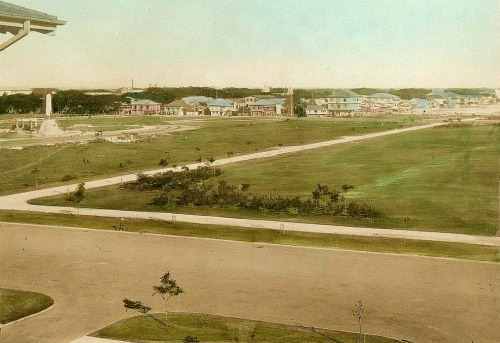
The centerpiece of the park is the monument of Jose Rizal erected in 1913. In the photo next, the monument is on the left. Notice how bald the place was.
Luneta in 1910 (1st American Occupation) 
The park have witnessed major fragments of Philippine history… political, theatrical and sporting events.
Inaugural Parade At The Park In 1949
The park was also enlivened with carnivals and even rodeos. Simply said, those were in those days.
Then I saw the 70s…
I first saw and set foot on the park in 1973 when I joined the Armed Forces of the Philippines. It was a safe place to stroll. The trees were fewer and not so tall.
Luneta in 1973
The Agrifina Circle was sporting the fountained globe and the skating rink around it.
Agrifina Circle, 1970’s
Rizal Park… Today
It’s the 21st century… the executions, the carnival and the rodeos are gone.
The enduring centerpiece has remained in place.
Rizal Monument Circa 2012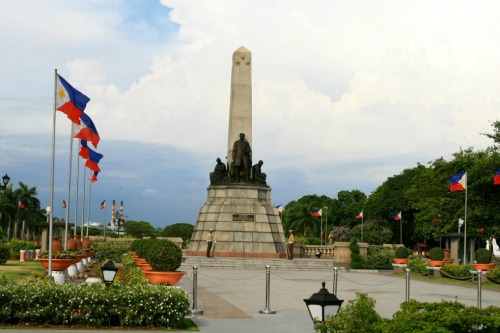
From a bit farther, notice
the trees in the background of the photo below. Those were not there in 1913.
Green Around The Monument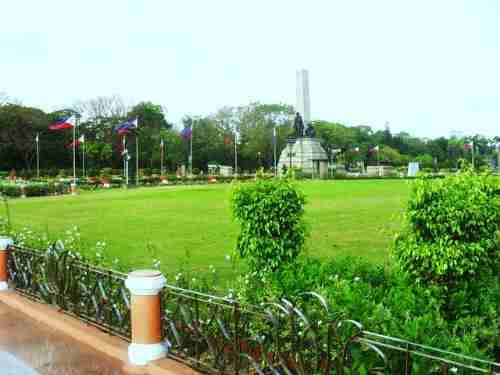
In the evening, the monument is another beauty to behold.
Rizal Monument At Night
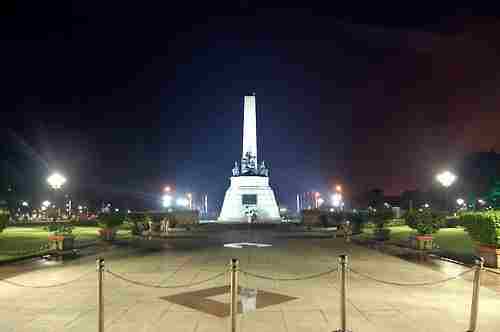
The trees in the park have grown bigger and taller. More have been added. The park is no longer bald. It is cooler these days than in the 70’s.
The Tall Trees of Luneta in 2012
The Agrifina Circle has a new look. A huge Lapu-Lapu monument supplanted the fountained globe. The trees in the vicinity have really grown taller… and increased.
Agrifina Circle in 2005
Tourists see the park increasingly each year. Interestingly, South Koreans are usual sites out there these days. In the 70’s, they were not around.
They never miss seeing the huge edifice below which was donated by the South Korean Freedom League in 2004.
Agrifina Circle in 2005
At this juncture, I’ll cut my verbiage and go graphics.
Photos of Note
You surely would love following:
Manila Skyscrapers West Of The Park
Philippines Flag & Veritable Manila Hotel, 2012
Never Mind The Darkening Clouds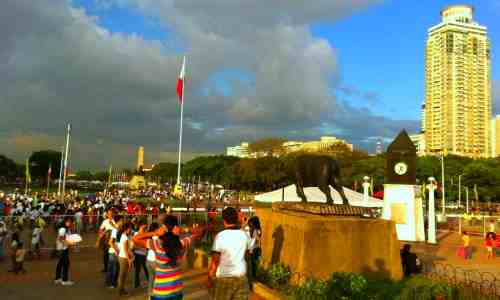
Geese By The Central Lagoon
A Clear Day At The Park
Early Afternoon At The Park
Tourists Taking Mementos
Dancing Fountain At Day 
Promenaders Starting To Grow Into The Night 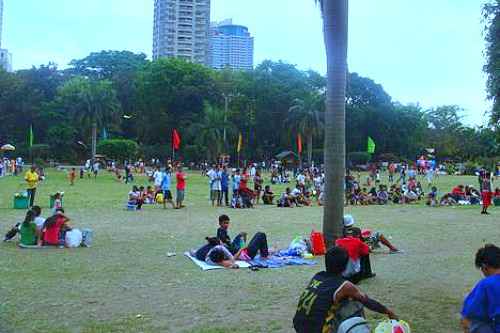
Where Children Play 
Tranvia Ride
Horse-Drawn Carriage Ride 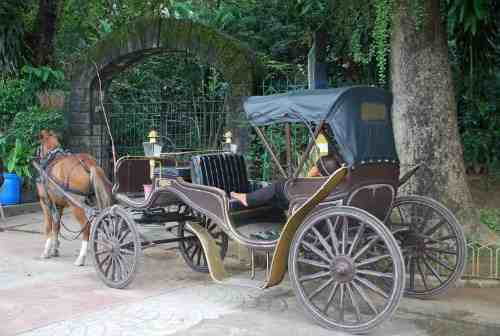
Chinese Garden & Lagoon
Japanese Garden & Lagoon
Botanical Garden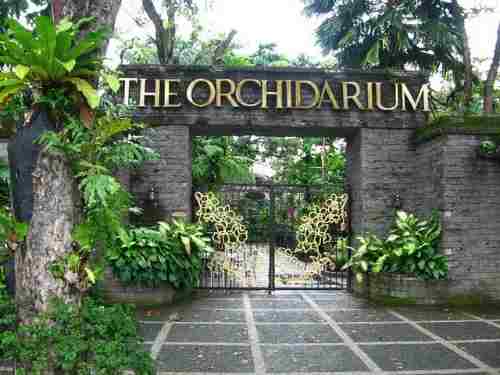
Rado Flower Clock
Memento Where Rizal Was Exactly Executed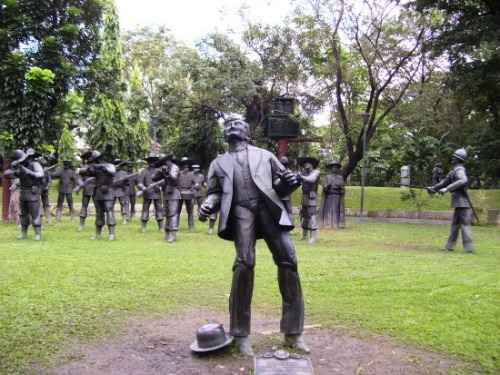
Kilometer Zero Marker And Centennial Clock
Dancing Fountain At Night
First New Year Countdown, 2011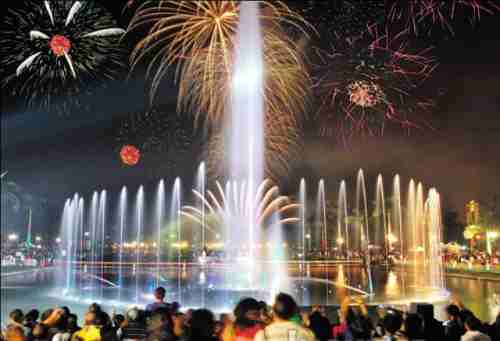
2012 New Year Countdown
What The Future Holds
The park will remain a perfect ground for public recreation and relaxation and knowing history.
The future is only going to be more positive.
It’s a park my children and posterity would frequent later on and compare what I have written thus far.
Wrap Up
Rizal Park is your rest and recreation and history fit. It naturally and spiritually uplifts the Filipino national psyche.
There is something in the source of the name… Jose Rizal, the patriot and martyr.
If there’s something you want to clarify, please Contact Me.
Convinced? Come and SEE, LIVE or INVEST in The Philippines.
Like This Page?
Return from Rizal Park to Philippine Islands







New! Comments
Have your say about what you just read! Leave me a comment in the box below.